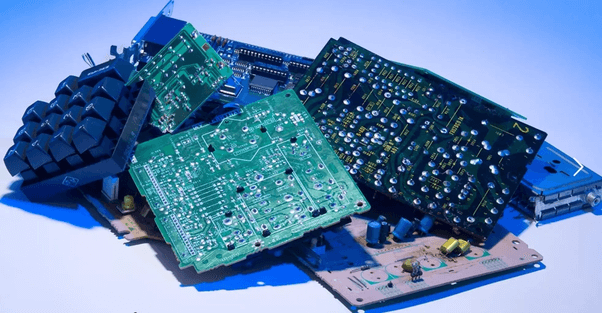Today's electronic waste is the fastest growing and most problematic waste stream in the world, this waste ranges from computers, televisions, printers, cell phones, to any electronic device.
In the USA In 2014, more than 19 billion pounds of electronic waste, approximately 50 pounds per person, was discarded. By the end of 2018, electronic waste has reached figures of more than 50 million tons per year and most of these electronic waste is not disposed of properly, damaging the environment.
Only about 15% to 20% of these wastes are recycled worldwide and recycling methods vary. Many countries simply send their electronic waste to other countries, where regulations are lower.
Toxic substances in electronic waste such as lead, cadmium and mercury cause environmental and health problems.
In an investigation carried out by the Massachusetts Institute of Technology (MIT) they discovered that the 200 discarded electronic devices, which were integrated with a geolocation device, ended up in landfills in Hong Kong, Taiwan, China, Mexico, Pakistan and Canada among other countries , demonstrating the lack of Electronic Waste Management.
Desktop computers were previously made mostly of metals which were easy to recover, but today there are more plastic-based items and therefore are more difficult to remove, this is the biggest challenge facing recyclers today.
So we are consuming smaller items every time, but with more volume of hazardous materials inside them, which strongly damage the environment.
The laws governing electronic waste have been slow to arrive, but countries are finally beginning to adopt them due to growing environmental and health concerns.
When China, which took 70% of the world's electronic waste, banned the import of several devices earlier this year, madness broke out between countries like the US to find alternatives. Thailand quickly became a "new landfill," according to Reuters, and authorities are now weighing whether to enact similar restrictions.
In US, certain types of electronic waste, such as televisions and computer monitors, are considered hazardous and cannot enter the normal waste stream. Beyond that, state-by-state electronic waste laws vary, with 25 states that apply additional regulations and the rest cannot enact specific rules.
California, a pioneer in the field of recycling and electronic waste, created an electronic waste law in 2004 that taxes certain electronic devices such as computer monitors, televisions and laptops at the point of purchase to pay for the future disposal of accredited recyclers.
But cell phones and other electronic devices are currently not included in this law, even though they represent a large portion of the 273,000 tons of electronic waste that arrives at California landfills each year.
In June 2007, the first iPhone was introduced to the market and since then there has been an explosion of items in portable formats; Together with the proliferation of automation technology, sensors and artificial intelligence, they have passed many recycling laws and to this day the California electronic waste law has not been updated.
And with 1.7 billion models sold every year, a solution to this problem has become URGENT.

